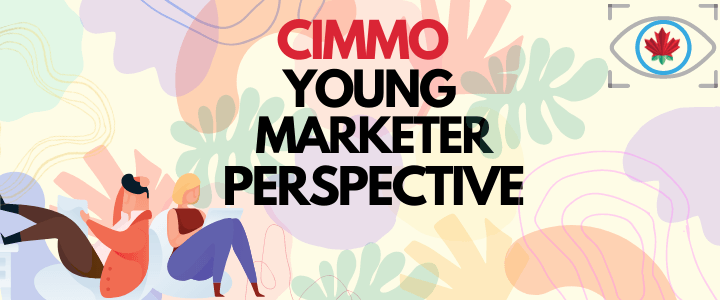
Welcome to the CIMMO Young Marketer Perspective where young professionals are providing us with their take on important topics in marketing. Our goal is to provide these marketers with a platform to share their learnings and experiences. Here Bhavin Bantva provides marketers with tips to avoid cultural insensitivity in marketing.
The worldwide COVID-19 pandemic has shaken the world, and we are feeling its impact in almost every aspect of our lives. It has impacted our lifestyles, the environment, and the way governments and businesses operate—its impact on the global economy will be felt for years and generations to come. But there is a silver lining: It has had a positive impact on several things: for instance, the environment is becoming cleaner as less greenhouse gases are emitted into the atmosphere. As well, use of natural resources has also decreased.
As mentioned, not all is gloom-and-doom, however: digital marketing has experienced a boost due to COVID-19. In this article, I will outline how COVID-19 is continuing to drive the partial—but significant—replacement of traditional marketing, with digital marketing.
In a product life cycle, there are four key stages: Introduction, Growth, maturity, decline. But within each of those stages, to varying degrees, the importance of marketing is critical. If a product has the potential to be successful in the market but no one is aware of that product, then there is less chance of it being successful. So, if marketing of a product is not done well, then it directly impacts sales, and there is an increased chance of failure, regardless how good the product may be. Due to the COVID-19 pandemic, people are spending more and more time inside. We can see big changes occurring in marketing, as the field shifts from out-of-home advertising tactics (like billboards), to digital tactics. This demonstrates that marketing is a dynamic field that is constantly changing and evolving; and it’s relying more and more on digital channels to spread content about products and services. This is an especially important consideration, as it is likely remote working will continue to grow and supplant a portion of the office environment as we knew it.
Let’s take an example from the entertainment industry, where they were using out-of-home as well as digital marketing methods for promoting movies, music and shows: due to COVID-19, they can no longer rely on out-of-home methods for promotion, which makes digital marketing the an increasingly used means to reach out customers and consumers. As people are spending most of their time at home, they are spending more time on the internet to do their job and connect with friends and family. This opens many more opportunities for social media marketing (SMM) and email marketing. And if done right way, it has a higher rate of success—with lower costs than traditional marketing, and potentially higher penetration and personalization rates.
Social Media Marketing (SMM)
I believe that if you asked many people, they would say they spend most of their time on the internet, specifically on social medial platforms like Facebook, Instagram, Twitter, LinkedIn, Pinterest, TikTok to name a few. According to Globalwebindex, individuals spend around 863.8 hours (36 days) on average, on social media, so far, in 2020 (Hillier, 2020). Nowadays, social medial platforms are not just for fun; they’re used to stay informed on current news and events, and to share thoughts and opinions about everything and anything, including social responsibility, etc., with the people across the world—in real time! As well, it makes social media a great means to help consumers about newly launched products or services, promotions, discounts, etc. The COVID-19 pandemic has caused online shopping to increase as people avoid shopping in physical stores—to minimize health risks, which is one of the reasons behind the marked increase in social media marketing.
Going back to the entertainment industry example: they’ve always been using social medial platforms for marketing, but now there is a shift away from going to movie theatres or music concerts, to using social medial platforms like Instagram, Facebook and YouTube, to do live streams for music concerts and shows. This further emphasizes the ever-growing need and preference for social media marketing, in today’s world.
Email Marketing
Email Marketing is another effective digital marketing strategy that’s been around for quite a while. Social media accounts can be closed on a temporary or permanent basis—at any time; but for the most part, email is always available to reach customers. Sending an email about new products and offers, has a high rate of success in creating loyalty; and affords brands the opportunity to provide personalized messages and curated deals to consumers. The importance of email marketing has increased as people are turning to online shopping more and more; and when ordering online, consumers are also subscribing to the brand’s channels to get direct information related to new product launches and services through email. This helps companies provide offers and information directly to their customers who have purchased their products in the past, and who willingly opt-in to receive advertising.
Looking at the current scenario, I think post-pandemic will change many things; it’s what’s become a “new normal”. Consumers may not return to bricks-and-mortar stores to the same extent they did pre-pandemic. And this will have an impact on how businesses operate, advertise and communicate with their stakeholders.
ABOUT THE AUTHOR
Bhavin Bantva is a passionate learner, currently studying Global Business Management at Conestoga College, and working part-time as Customer Service Representative. Bhavin has a solid background in data analysis and problem-solving as he holds a Bachelor of Engineering.
REFERENCES
Hillier, L. (2020, september 11). Blog. Retrieved from Econsulatancy : https://econsultancy.com/stats-roundup-coronavirus-impact-on-marketing-ecommerce-advertising







No comment yet, add your voice below!